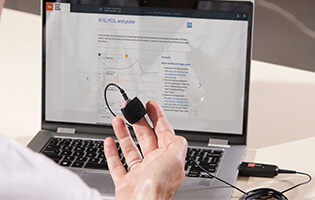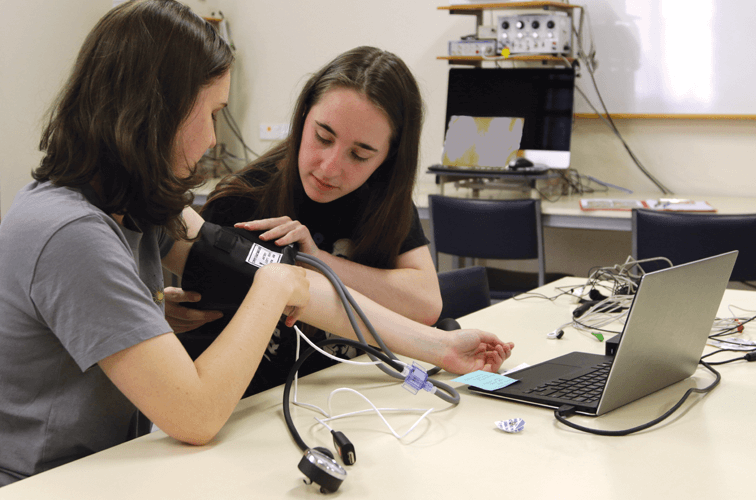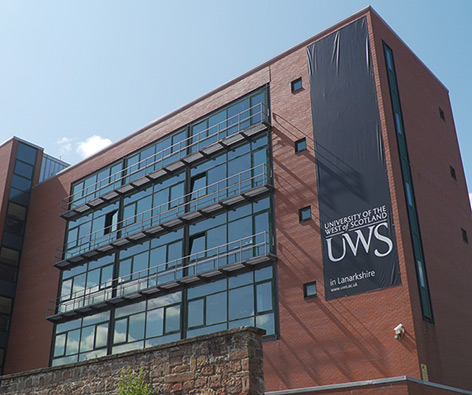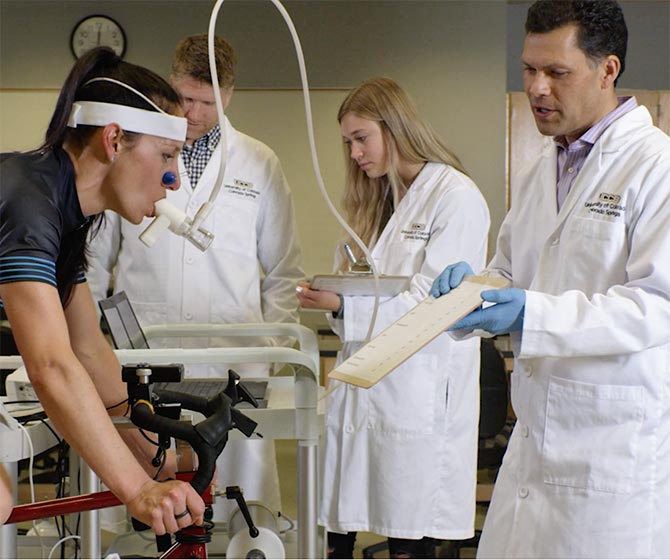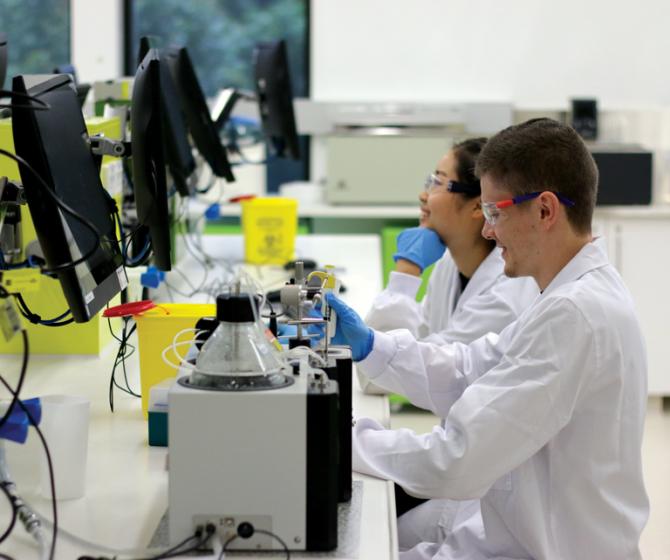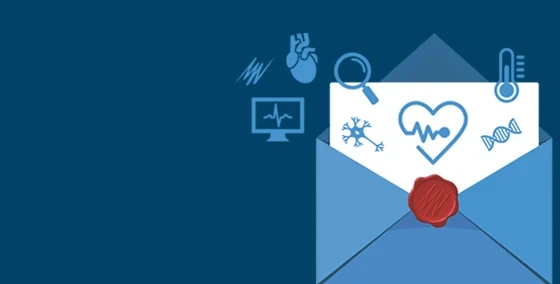
Professor Wendy Riggs was well-equipped when the COVID pandemic forced a rapid transition to online teaching. Having taught at the College of the Redwoods since 2012, Wendy was a flipped classroom enthusiast, and her YouTube channel (with more than 84 000 subscribers and 9 000 000 views!) hosts an extensive range of videos on anatomy, physiology, and general biology.
In the last semester, Wendy and her team have been teaching a fully asynchronous, remote course on human physiology. Although this is the first time Wendy has used Lt Sensors, this didn’t stop her from creating a class where students can check the sensors out and use them to record authentic data at home.
We asked Wendy about her experience as an early adopter of Lt Sensors, what she has learned, and what changes she plans to make going forward...
The impact of COVID on teaching practice
Wendy’s philosophy of teaching is creative and forward-thinking. “I thought I wanted to be an elementary school teacher, but when I went to my first college biology class I thought, “What?! I have to teach this.” I majored in Biology and got my teaching credential to teach at the high school level, before eventually starting to teach nights at the community college. Really, I just wanted to be teaching, and didn’t ever envision myself being at the college level - but I love it. It’s super flexible and super creative.”
The flipped classroom model has been highly influential and led to the creation of Wendy’s popular YouTube channel. “I started flipping my classes in 2012. Since then, I’ve flipped or taught every class online (except for one), so it’s definitely a method of teaching that I really like.” This enthusiastic adoption of technologically-enhanced teaching models meant that Wendy was in a good position when COVID caused teaching to shift online. “The fact that I have a full set of videos for general biology, anatomy, and physiology meant I was in a good position to provide assistance to others making that transition. When COVID came along in March 2020, I helped my colleagues, particularly my STEM colleagues, to move their courses online.”
As President of the Human Anatomy and Physiology Society during the onset of the pandemic, Wendy needed to support a huge community of educators in an uncertain teaching environment. “I was serving as the HAPS president during the 20-21 school year, and we just rallied to help people make connections, share materials, and talk about “How are we going to do this?” It’s been a time of service for sure, to help people who didn't have quite the same experience and resources as me.”
Using Lt Sensors to replace an existing system
Lt Sensors have only been adopted in the most recent semester. “Before, all of our human physiology labs were taught face-to-face. We would do the kinds of experiments that the Lt Sensors enable - but our equipment was expensive and buggy. I couldn’t visualize checking out that equipment to students. There also wasn’t a mechanism for sharing virtual data.”
Lt was used to lighten the load of resource creation, too. “I just used the labs out of the box. The only modification we made was that the Lt labs had lots of content in them, so we went through and pared them down. It’s an incredible value, I’m very familiar with authoring my own activities and my own labs, so to have resources just come out of the box like that is really helpful.”
Related: Understand Your Physiology - Our active online-learning resource for physiology students »
Providing students with flexibility
In the face-to-face iteration of the course, “my students would be in groups of four, and one person would be hooked up to the data-collecting sensors. They would all watch the screen and see the data, and then they would talk to each other and try to figure out what was happening.” As Wendy thought about how the physiology course could be taught remotely, the idea of group work at a distance was front of mind: “Why couldn’t we do this at a distance, why couldn’t we facilitate really robust lab experiences when they aren’t sharing space?” In a hands-on discipline like human physiology, it’s important for students to be able to perform experiments and collect authentic data. Allowing her students to check the sensors out meant that students could self-organize into groups and coordinate over video conferencing software to complete labs in Lt.
"The best part for me was how intuitive it was for the students, as evidenced by the lack of emails I received asking how to do things. Clearly their experience was positive and I even heard back about it in their end of semester evaluations. Several students said they really liked the format and found the labs super helpful."
Find out more: How to use Lt's example data to teach labs remotely »
Experiencing the scientific process at home
The course doesn’t have an explicit learning outcome related to collecting authentic data, but students are required to learn about the process of science. One of the things Wendy finds most engaging about the labs in her course is that “it’s really fun to actually collect data on your classmates, and then try to figure out what it means, and ask questions.”
During the transition year of 2020, it felt like there was something missing. “We did the simulation labs, and a few kitchen labs, and some worksheet labs - so there was a piece that was missing for me in the robustness of the lab activities. Lt Sensors let us do science - collect data and look at it and think about why things happened - and it’s live, it’s real data as opposed to canned data.”
How did students cope with unfamiliar hardware in an asynchronous course?
Wendy has some tips for educators thinking about teaching this way:
1. Let the students self-select - Letting the students choose who would check the sensors out and who would be in their groups supported their agency, and naturally ensured the most technologically-literate students had the sensors. Because of this, Wendy “trusted that the person who took the sensors would feel more technologically-resilient than their group mates.”
2. Stay in touch with your students - Community is enormously important in online courses, and even more so in asynchronous classes. For Wendy, creating a sense of community was paramount, and she used discussion forums and a chat tool to accomplish this. “Our state regulations for the California community colleges around online learning require that you have meaningful interaction with your students; it’s not just a canned class. You are actually engaging with your students, which can be challenging in an online scene. It feels kind of exhausting and constant, but we think it’s really important.”
3. Enable peer connections - It’s not only important to foster your relationship with your students, but also student-student interactions: “We really try to facilitate their connections with each other, so we encourage study groups, and in all our discussion forums, it isn’t “Respond to three classmates”, it’s “What can you do to help someone out?”, and it creates a cosier community.” Creating this strong sense of cooperation has also meant that students are more open to new teaching approaches: “When we come out and we say “By the way, now we’re gonna do these sensor labs”, they say “Okay!”. They’re primed to deal with the uncertainty and the challenge, and I get a lot of really positive feedback.”
Related: Teaching through COVID19: Dos and Don’ts »
Students taking sensors home - isn’t it risky?
You might be reading this thinking that students checking out hardware is a disaster waiting to happen. But that’s not necessarily true! In Wendy’s course, students were required to sign a form when checking sensors out, which required them to replace sensors that were lost or broken. In addition, as a small cohort of 60 in a relatively small community, Wendy felt at ease with the programme: “The foundation of my comfort is that I know them - and they know I know them. We started using the sensors themselves in week six, and so you have five weeks of building your community and learning who people are, and then they use the sensors, and then there are five weeks where they can bring them back.”
And this approach is not necessarily just a stopgap measure for the pandemic. Wendy and her team have been discussing the idea of HyFlex teaching: "That kind of model allows total flexibility for the student, depending on what happens in their lives: if they can show up to a face-to-face class, they might do that, but if they can’t for whatever reason, then they have this way of continuing in the class and staying engaged that’s legit - not “I’m filling out worksheets and doing this busy work because I can’t be in class”, but actually still participating in the face-to-face experience.”
Bringing a new approach into the future
In the post-COVID age of digital teaching, Wendy reflects a common attitude amongst educators when she says that “I feel like my brain is living in this world of constantly needing to flex to adjust to whatever comes up and whatever people need.” In the future, the course might shift to be more hybrid, with a face-to-face lab component. This model would ensure “we’d all be together to answer questions and get over the tricky parts of the learning curves.” But the portable and flexible nature of the USB Sensors means that any mode of learning is possible - and no matter what, it seems Lt Sensors are going to stay in the mix, with Wendy purchasing more.
What advice do you have for other educators who are considering using technology to teach?
We asked Wendy what she would say to other educators contemplating new technology or techniques: “Be brave, because you’re going to have to be patient with troubleshooting. We approached it as though we’d be totally okay with whatever happened. We were just being totally flexible and happy and curious as we went through this, so that none of us got stressed out and anxious.”
“You know, you look at the community that kids create online, and all of us create online - we don’t have to share space to make connections and learn from each other.”
Enjoy this story? Register for Wendy’s webinar, “Examining the Anatomy and Physiology Lab Experience”, in December!
Related: Lt Human Physiology Collection »

Wendy Riggs is a tenured professor at the College of the Redwoods, California, and is enthusiastic about flipped classrooms and open educational resources (OER). In 2019, Wendy was elected President of the Human Anatomy and Physiology Society (HAPS); previously, she was the Chair of the HAPS Communications Committee and served as Secretary. Her popular YouTube channel, hosting videos on anatomy, biology, and human physiology, has over 84 000 subscribers and 9 000 000 views.

